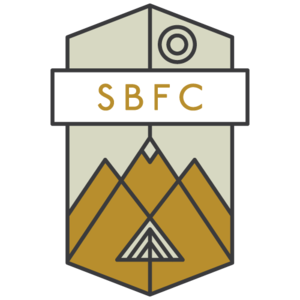Leo Scheibe, 2021 Warren Miller Sponsored Fellow
Eagle Mountain Trail #206 to Long Lake and out via Dutch Ridge Trail #2150
July 20-28, 2021
Nez Perce-Clearwater National Forest | Selway-Bitterroot Wilderness
Several weeks ago, we ventured out into the Wilderness for our first hitch. It was several rainy June days of learning how and when to use KitKats, Silkies, Katana-boys, Pulaskis, axes, crosscuts, and wedges. Since then, we have had the opportunity to improve our skills and become comfortable using these tools. Here are descriptions of the tools we use, and some clips of the SBFC Nez Perce-Clearwater Trail Crew clearing trails on our last hitch.
We carried two Silky saws on this hitch. Some crews also call these saws, “Habukis.” Both of these names originated from the brand that creates these tools. These foot-long saws feature a curved handle and blade that are best for cutting small trees, around six inches or smaller. We also use them to cut large limbs off of logs. When not in use, these saws are stored in a plastic sheath.
In the video below, Jay is using a Silky saw to clear a small tree off of Dutch Ridge Trail #2150.
Katana-boys‑‑or K-boys for short‑‑are a few inches longer than a Silky saw. The main difference is that this saw has a straight handle and blade. Additionally, this saw folds shut and comes with a canvas sling for transport. These saws make quick work of small and medium-sized trees, up to about 15 inches. On this hitch, we had three of these saws.
Here Alex uses a K-boy to finish cutting a medium tree on Dutch Ridge Trail #2150.
Axes are one of the hardest tools to master on this list. They require a sharp blade, consistent accuracy, stamina, and both a safe and appropriately angled swing to be efficient. Once you get the hang of swinging it though, it quickly becomes a favorite. We use axes to chop through trees, remove tree limbs for easier access to logs, and to pound in wedges. Our crew carried four axes on this hitch.
In this video, Liesl finishes chopping through a tree on Goldhill Trail #247.
This next video is of me as I limb a tree on Gold Hill Trail #247.
Last but not least is the vintage crosscut saw. This one is a common favorite amongst trail workers, as it has extensive application and efficiency out on the trails. They come in a variety of lengths; our crew of seven carried two six-footers on this hitch. The handles are removable, allowing this saw to be used by either one or two people. Typically, two people will run the saw unless it is dangerous to keep sawing from one of the sides (if the tree might fall on the sawyer). Running the saw individually is known as single-bucking.
Another technique used, albeit begrudgingly, is under-bucking. This is when you turn the saw upside down and saw from the bottom of the log, upwards. This is done when there is too much compression at the top of the log to saw through without pinching the saw and getting it stuck. Typically, my crew designates a crosscut team for the day. They carry with them a k-boy for finishing cuts (if there is a concern for the tree damaging the crosscut when it falls), an ax (for limbing and wedging), and wedges (hefty pieces of plastic that are used to prevent the log from pinching the saw).
This is a video of myself and Clint as we cut an extra-large log off of the Dutch Ridge Trail #2150. Part way through the video, you can see Clint pound in a wedge to prevent the kerf--which is the path in which the saw is cutting in--from closing in and pinching the saw. We also finished the cut with a k-boy. After the cut, we used our legs to push the log clear of the trail.
Some tools I did not have the opportunity to capture on this hitch include the KitKat, loppers, Pulaski, and shovel. A KitKat is a red, pocket-sized folding saw that we use to clear woody shrubs. Loppers are your traditional pruning shears that are excellent when heavy brushing (clearing brush) needs to be done. The Pulaski is a traditional firefighter tool that we use to retread (re-route or clean up) trails and clear water drains that guide water off of trails to prevent erosion. Lastly, we carry a shovel to also clear drains and fling larger rocks off of trails as we hike. All in all, the seven of us carried a total of 18 tools on this last hitch.
2021 Warren Miller Sponsored Fellow
Nez Perce-Clearwater National Forest | Selway-Bitterroot Wilderness
University of Idaho
Major: Recreation, Sports, & Tourism Management | Minor: Natural Resource Conservation
Leo is from Boise, Idaho. He brings experience from working on a tropical produce farm in Moloaa, Kuaui as well as experience working as an Adventure Camp Counselor in Cascade, Idaho. He’ll take every opportunity to spend time outdoors, from backpacking to skiing to spelunking— you name it! He is passionate about working to protect our wild spaces and improve access to them for all demographics.

